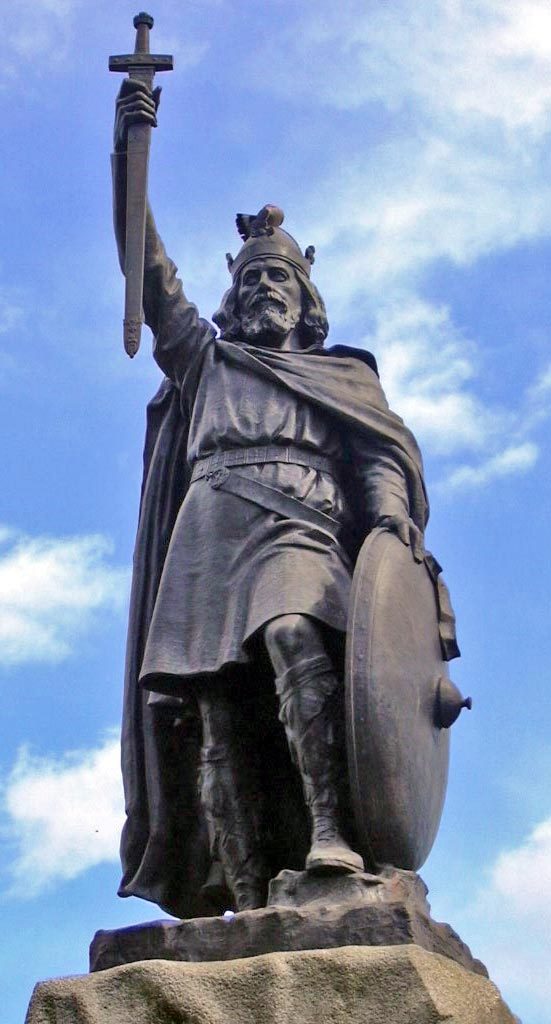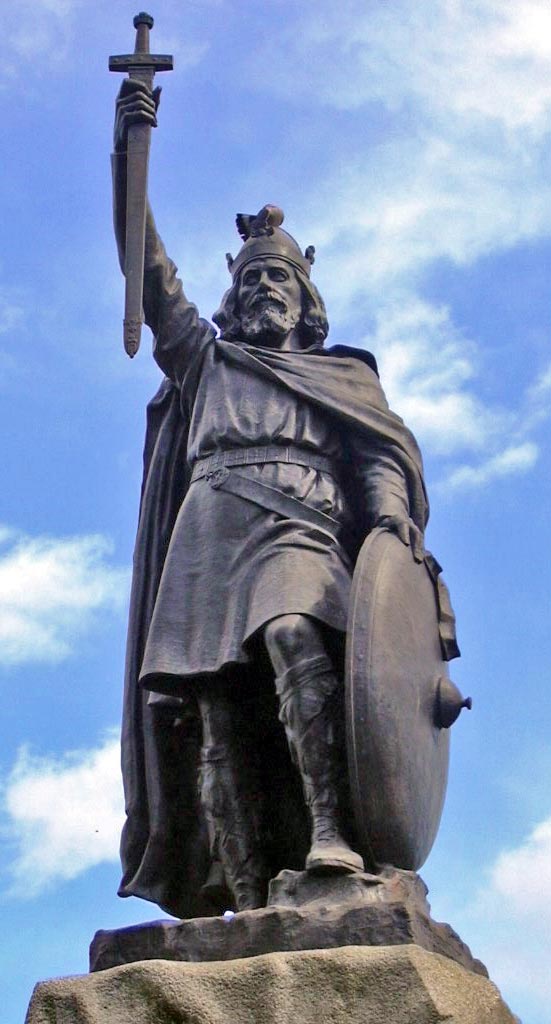
Source: Odejea, http://en.wikipedia.org/wiki/File:Statue_d%27Alfred_le_Grand_à_Winchester.jpg
The bone had been in storage since it was dug up in 1999 during the excavation of a car park, which had been built over the site of a Anglo-Saxon cathedral.
Alfred was crowned king of Wessex aged 22 and later united England during some of its formative years. He ruled from 871 until his death in 899 at the age of 50.
The find comes just months after researchers said they had found the remains of the 15th century King Richard III under another car park in the central English city of Leicester.
Nick Thorpe of the University of Wincheter archaeology department said they were "extremely excited to have been able to plausibly link this human bone to one of these two crucial figures in English history".
The archaeologists stumbled upon the bone after their own excavation of another site last year came up with nothing.
They checked the museum's records and found two boxes of bones from the 1999 excavation of the ancient cathedral in Winchester.
One of the bones was found at the high altar, and historical evidence indicated that only the coffins of Alfred and Edward were buried there.
Carbon dating then showed it dated from 895-1017, the period that Alfred and his son were alive.
Researcher Katie Tucker said: "The discovery of the bone in a pit dug into the graves in front of the high altar makes it far more likely that it comes from either Alfred or Edward."
Tucker said there was a "good chance" of extracting DNA from the bone, but the problem was then finding a descendant of King Alfred to check it with.
The remains of Edward the Elder's daughter Eadgyth were found in Magdeburg Cathedral in northern Germany in 2008 but were poorly preserved and it had not been possible to get DNA from them, Tucker added.
It was DNA testing on the bones of Richard III and comparison with a living descendant that enabled scientists to prove that they had found the remains of the monarch who died in 1485.
------------------------------------------------------------
Alfred was crowned king of Wessex aged 22 and later united England during some of its formative years. He ruled from 871 until his death in 899 at the age of 50.
The find comes just months after researchers said they had found the remains of the 15th century King Richard III under another car park in the central English city of Leicester.
Nick Thorpe of the University of Wincheter archaeology department said they were "extremely excited to have been able to plausibly link this human bone to one of these two crucial figures in English history".
The archaeologists stumbled upon the bone after their own excavation of another site last year came up with nothing.
They checked the museum's records and found two boxes of bones from the 1999 excavation of the ancient cathedral in Winchester.
One of the bones was found at the high altar, and historical evidence indicated that only the coffins of Alfred and Edward were buried there.
Carbon dating then showed it dated from 895-1017, the period that Alfred and his son were alive.
Researcher Katie Tucker said: "The discovery of the bone in a pit dug into the graves in front of the high altar makes it far more likely that it comes from either Alfred or Edward."
Tucker said there was a "good chance" of extracting DNA from the bone, but the problem was then finding a descendant of King Alfred to check it with.
The remains of Edward the Elder's daughter Eadgyth were found in Magdeburg Cathedral in northern Germany in 2008 but were poorly preserved and it had not been possible to get DNA from them, Tucker added.
It was DNA testing on the bones of Richard III and comparison with a living descendant that enabled scientists to prove that they had found the remains of the monarch who died in 1485.
------------------------------------------------------------









 Home
Home Politics
Politics










